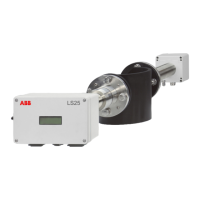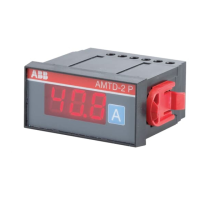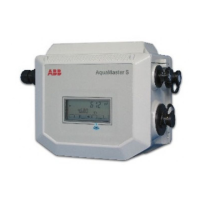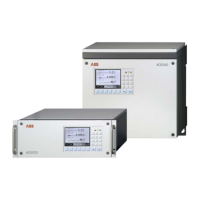78 AO2000 CONTINUOUS GAS ANALYZERS | OI/AO2000-EN REV. B
Gas connection installation
Design of the gas connections
The analyzer module gas ports have ⅛ NPT internal threads (connection
diagrams, see chapter "Gas line connection" (see page 80)).
Fidas24: The sample gas connection is executed as fitting for PTFE or stain-
less steel tube with an outside diameter of 6 mm. The exhaust air connec-
tion has an external thread for connection of the exhaust air tube (stainless
steel tube with terminal nut and clamp ring, outside diameter = 6 mm, sup-
plied with the gas analyzer).
Requisite material
Material supplied
Tubing connectors with ⅛ NPT thread
and PTFE sealing tape
yes
no
or
Threaded connections with ⅛ NPT thread
and PTFE sealing tape
no
no
ATTENTION
The fittings must be clean and free of residue! Contaminants can enter
the analyzer and damage it or lead to false measurement results!
Do not use sealing compound to seal the gas connections! Constituents
of the sealing compound can lead to false measurement results!
Pneumatic module: The gas connection ports are made of plastic (PVDF).
Do not use metal tubing connectors or threaded connectors.
Caldos25: The analyzer module gas connection ports in the version for
flowing reference gas or for corrosive sample gas are made of plastic
(PVC-C). Do not use metal tubing connectors or threaded connectors.
Fidas24: Only use threaded connections of metal!
Gas connection installation
1 Screw out the yellow plastic screwing caps (5 mm hexagon socket) from
the connection ports.
2 Screw in the tubing or threaded connectors with sealing material in the
connection ports.
NOTES
We strongly recommend that the gas lines are connected to the analyzer
module before the gas analyzer is installed, since the gas ports are now eas-
ily accessible.
Screw in the fittings carefully and not too tightly! Follow the manufacturer's
installation instructions for the fittings!
Gas path seal integrity verification
The leak tightness of sample gas path and (if applicable) reference gas path
is checked at the factory. Since the gas path seal integrity can be affected
during shipping, the leak tightness should be checked (see page 268) at the
installation site.
NOTE
We strongly recommend that the tightness of the gas feed paths are
checked for leak tightness before the gas analyzer is assembled, since the
system housing must be opened in the event of a leak.
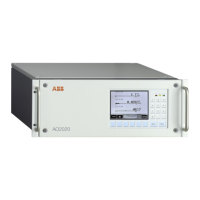
